Are you constantly getting stomped in first-person shooters? You’re not alone. Many gamers struggle to keep up in fast-paced FPS games like Counter-Strike or Battlefield. But here’s the kicker: your hardware might not be the culprit.
This article digs into five surprising reasons you might be falling short – and how to fix ’em. Ready to level up? 123
Key Takeaways
Hardware limitations can impact FPS performance. Upgrading RAM, CPU, or GPU may improve gameplay. Aim for 60+ FPS and use a high refresh rate monitor.
Practice routines are key to improving. Spend 15 minutes daily on aim training, 20 minutes learning maps, and watch pro gameplay videos to learn strategies.
Game mechanics like hitboxes and bullet spread affect accuracy. Master movement tactics like peeking, strafing, and using high ground to gain advantages.
Psychological factors like performance anxiety and fear of losing can hinder gameplay. Focus on having fun and set small, achievable goals to overcome mental barriers.
Aim trainers can significantly boost skills. Studies show action games can reduce reaction times. Mix up drills to challenge different aiming skills.
Table of Contents
Identifying Common Challenges in FPS Games

FPS games can be tough nuts to crack. Let’s dive into the common hurdles that trip up many players – from shaky aim to getting lost in the map.
Improving Aiming and Accuracy
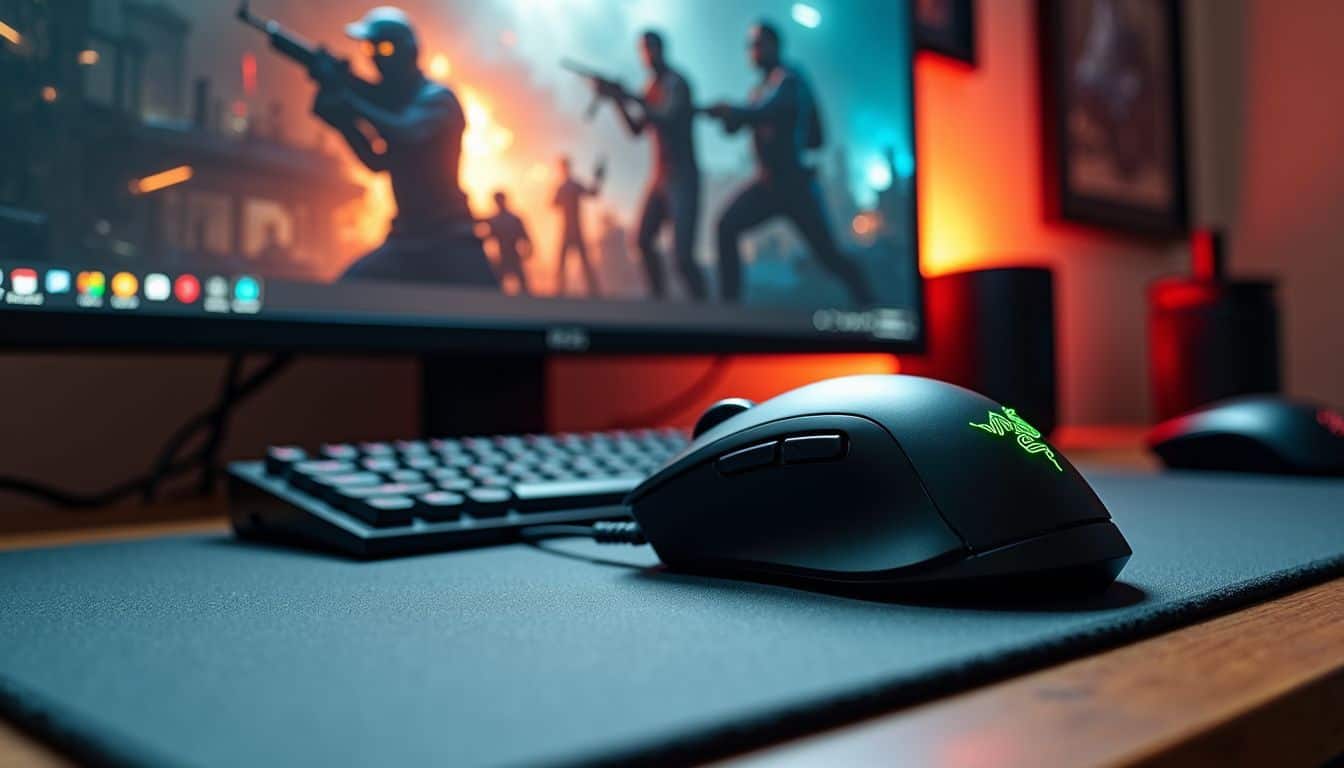
Nailing those headshots in FPS games isn’t just about luck. It’s about practice and smart setup. Let’s talk mouse sensitivity. A pro tip? Try for a 360-degree turn with an eight-inch mouse move at 1,000 DPI.
This sweet spot can boost your aim big time. For gear, think quality. A Razer Mamba TE mouse and Ornata keyboard combo could be your ticket to better accuracy. 1 Don’t forget a good mouse mat like the Razer Firefly – it matters more than you’d think.
But gear alone won’t make you a sharpshooter. You’ve got to put in the work. Warm up by aiming at bots before jumping into matches. It’s like stretching before a run. Also, mix up your weapons and tactics.
What works in one game might flop in another. And here’s a biggie – tweak your sensitivity for each new game you play. It’s not one-size-fits-all in the FPS world. 2 Lastly, aim for stable performance with over 60 FPS.
Smooth gameplay equals better aim. Oh, and if you’re into the competitive scene, check out Counter-Strike betting for some extra excitement. Esports betting has grown significantly in recent years, with Counter-Strike being one of the most popular games for wagering. Many reputable online bookmakers now offer markets for major CS:GO tournaments, allowing fans to bet on match outcomes, map winners, and even in-game events.
Expanding Map Knowledge
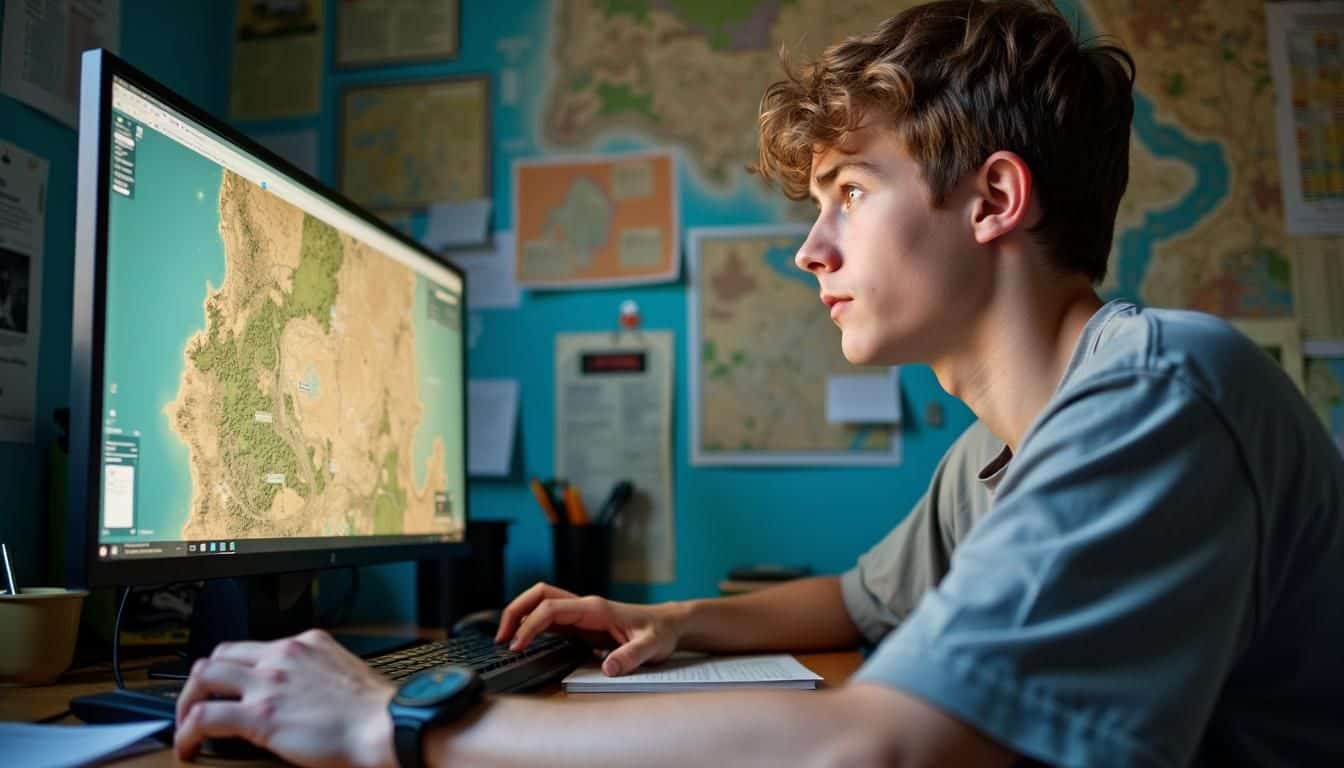
Map knowledge is key in FPS games. It’s like knowing your own neighborhood – you move faster and smarter. Good players remember every corner and hiding spot. They know where enemies might hide or appear.
This gives them an advantage in firefights. 4
To improve your map skills, explore in private matches. Notice important areas and sniper spots. Watch pro gamers play – they often show hidden paths or tricks. Some games have custom maps on Steam.
Playing these can improve your spatial awareness. Keep in mind, practice makes perfect. The more you play, the better you’ll get at understanding the battlefield. 3
Knowing the map is half the battle in FPS games.
Enhancing Reaction Time
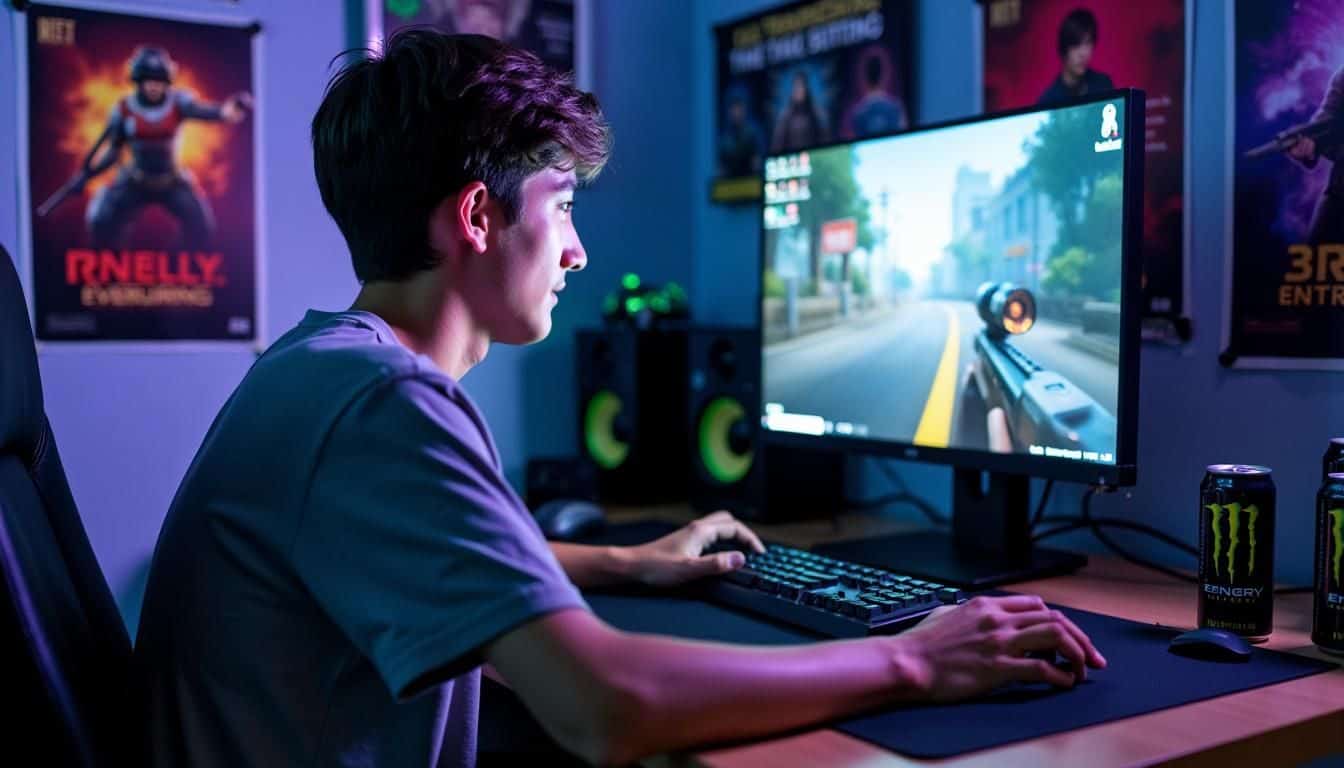
Reaction time can make or break your FPS game. Slow reflexes? You’re toast. But don’t sweat it – you can speed up those synapses. Action games are your secret weapon. They boost processing speed and cut down reaction times without messing up accuracy.
Cool, right? Studies show gamers react 11% faster than non-gamers. That’s huge in a firefight! 5
Want to improve? Try an aim trainer. These tools sharpen your reflexes and accuracy. It’s like going to the gym, but for your gaming skills. Research supports this – people who train see significant drops in reaction time.
So, next time you’re struggling in Sekiro or Dark Souls, keep in mind: practice makes perfect. Your boss-beating skills are just a few training sessions away. 6
Exploring Psychological Barriers in FPS Gaming
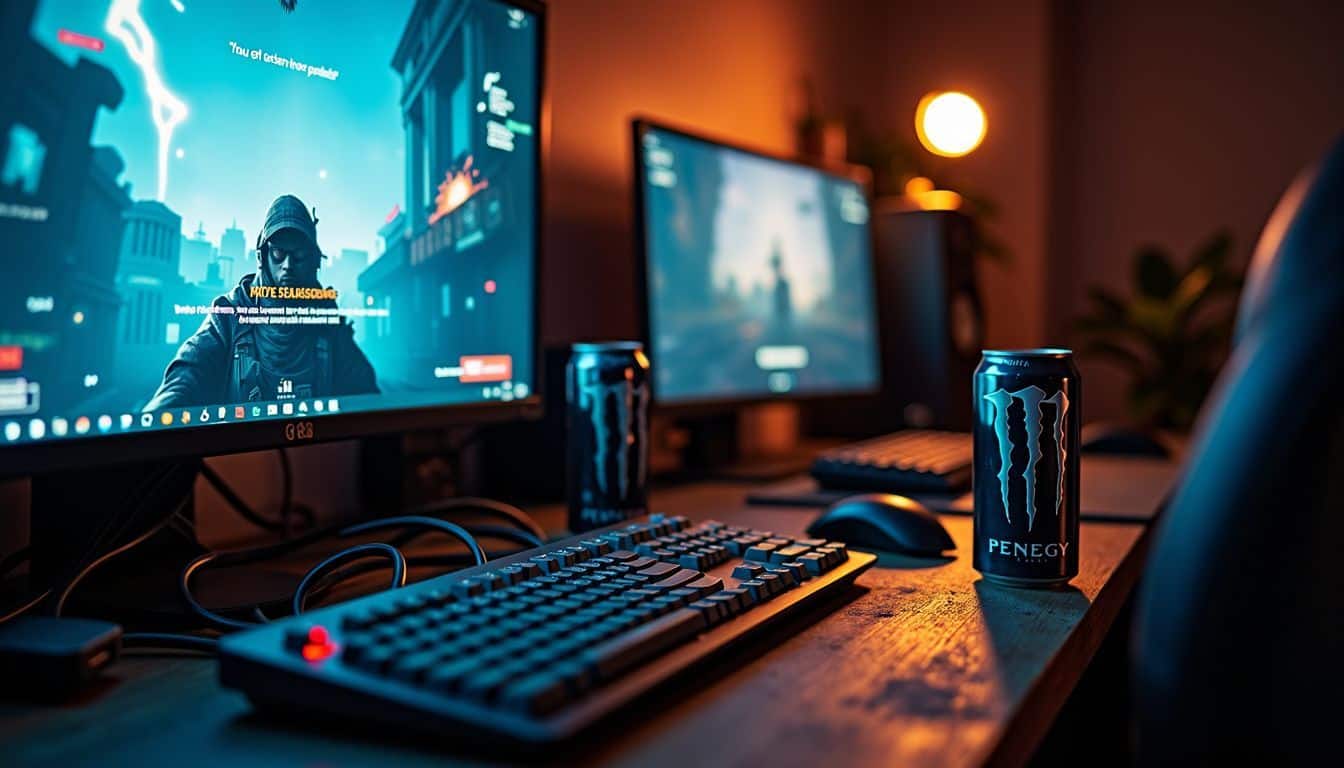
Your mind can be your worst enemy in FPS games. It’s not just about quick reflexes – your thoughts and feelings play a huge role too. Let’s dig into the mental hurdles that might be holding you back from dominating the battlefield.
Managing Performance Anxiety
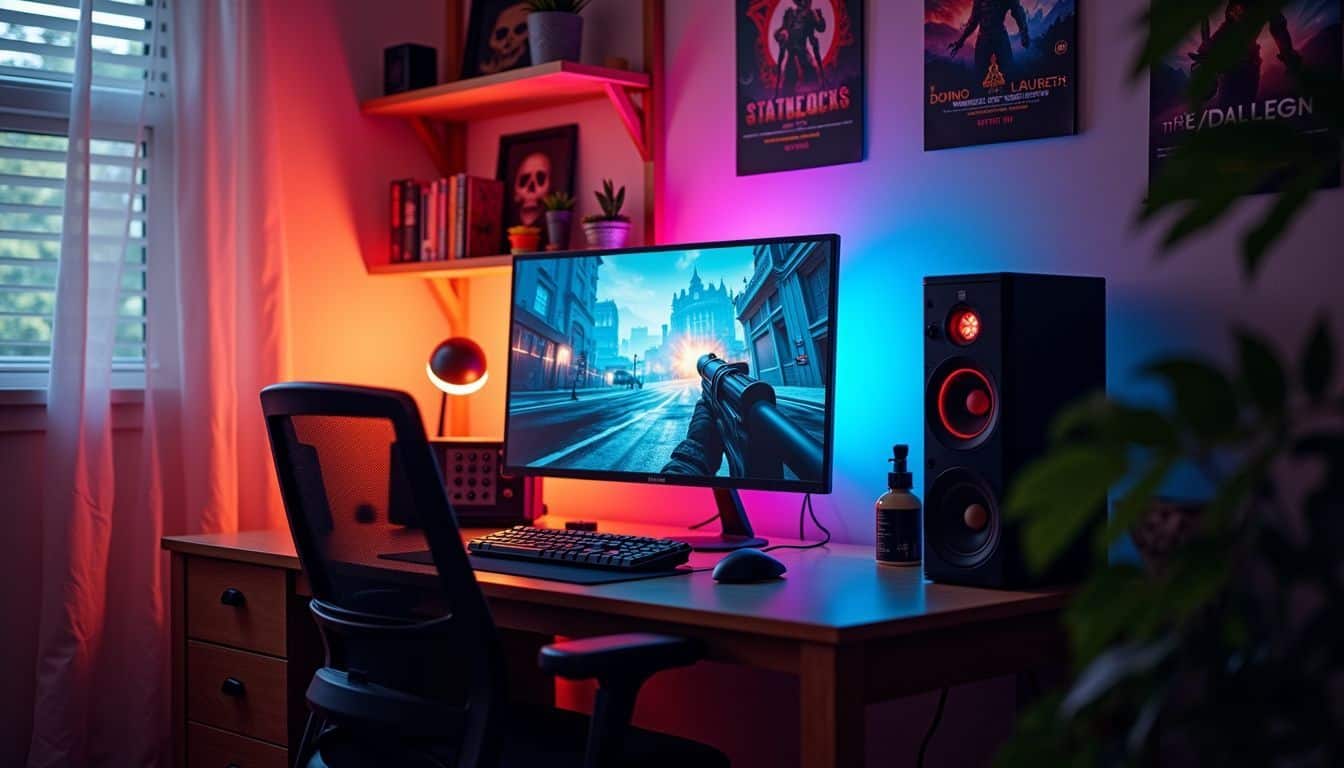
Performance anxiety can hit hard in FPS games. Your heart races, palms sweat, and you can’t aim straight. It’s like facing a tough get better at shooter games boss fight in Final Fantasy – scary stuff! But don’t worry, it’s normal.
Even pro gamers feel jittery sometimes. The key is to breathe deep and focus on having fun. It’s just a game, not life or death. 8
To beat the anxiety monster, try some tricks. First, practice a lot in a stress-free setting. This builds muscle memory. Second, use positive self-talk. Tell yourself, “I’ve got this!” Third, set small, achievable goals.
Maybe aim to get one more kill than last time. Lastly, if you’re still struggling, take a break. A quick walk or snack can reset your mind. With time and practice, you’ll feel more at ease and your skills will improve.
You might even become an FPS boss yourself! 7
Gaming experiences can enhance attention and cognitive functions. 7
Handling Fear of Losing

Fear of losing can mess with your head in FPS games. It’s like a pesky gremlin whispering doubts in your ear. You start to overthink every move, afraid to take risks. This fear can make you play too safe, missing out on chances to win.
It’s a vicious cycle – the more you worry, the worse you play. 9
But here’s the good news: you can beat this fear. Try focusing on having fun instead of just winning. Set small goals for each match, like getting better at aiming. Even pro gamers lose sometimes.
It’s part of the game. The key is to learn from each loss and keep playing. With time, you’ll feel more relaxed and confident. Your skills will improve, and winning will come naturally.
Don’t let fear hold you back from enjoying the thrill of the fight! 10
Simplifying Thoughts During Gameplay
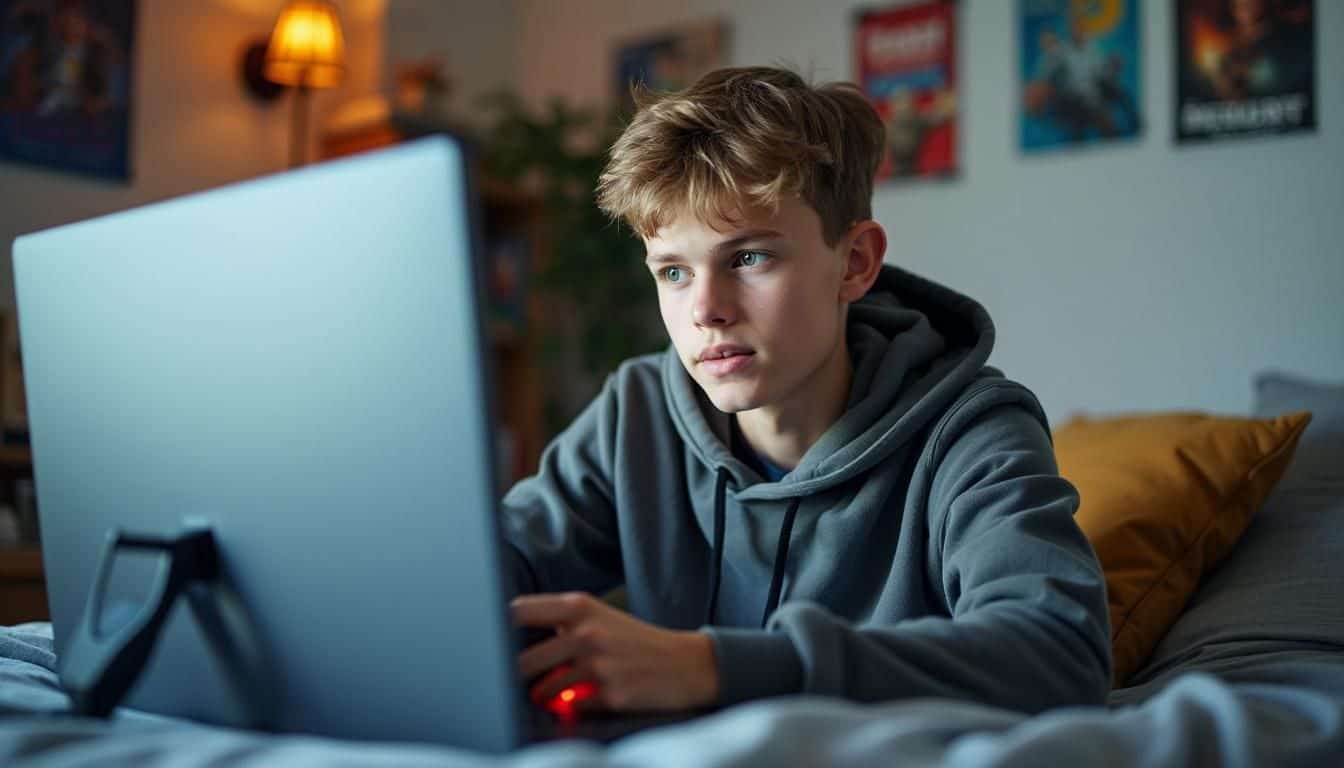
Moving from fear of losing, let’s talk about clearing your mind while playing. A busy brain can mess up your game. Too many thoughts can slow you down and hurt your aim.
Pro gamers often have a calm mind when they play. They focus on what’s happening right now. This helps them react faster and make better choices. Studies show that expert gamers have quicker reaction times. 7 To get better, try to quiet your mind. Don’t worry about winning or losing. Just pay attention to the game in front of you. This can help you play more like the pros. It might even help you beat those tough bosses in first person shooters. 11
Examining Technical Factors That Impact FPS Performance
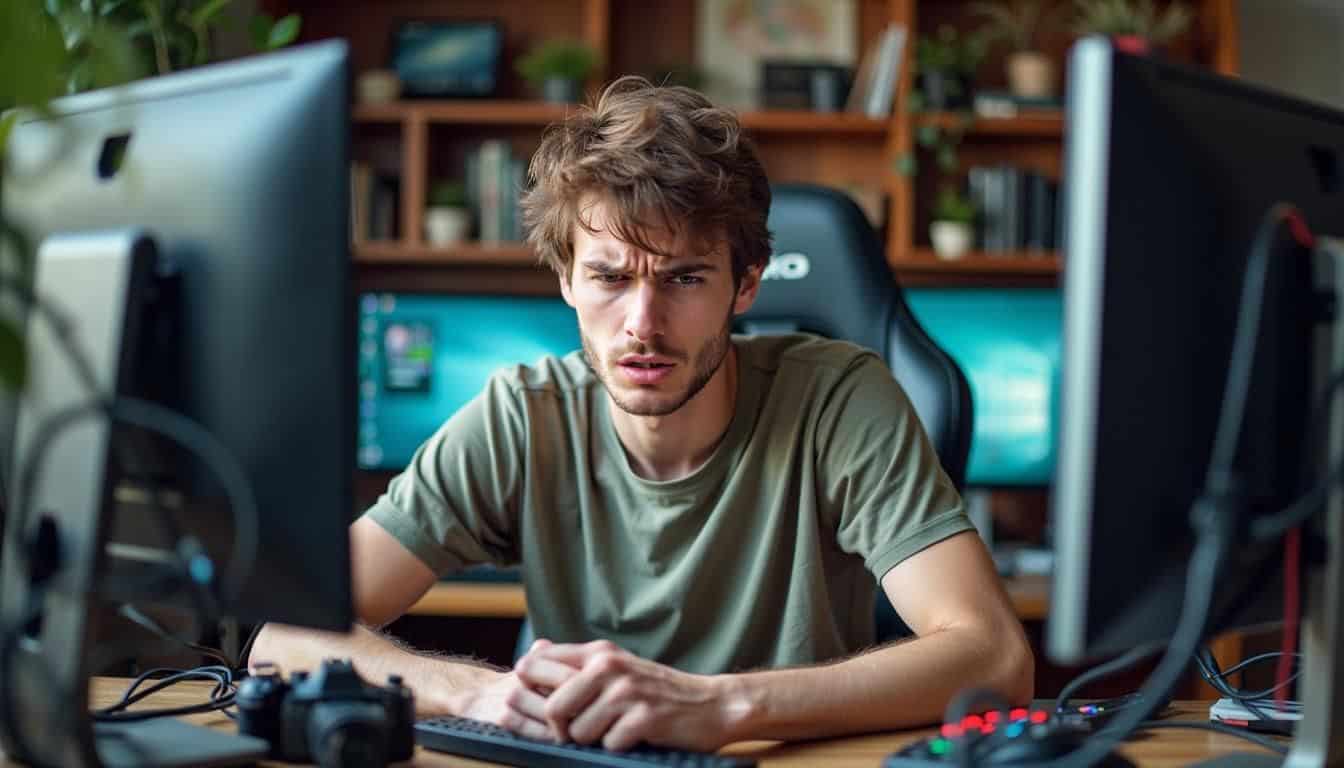
Your computer’s guts can make or break your FPS game. Slow hardware, wonky settings, or laggy internet? They’re all culprits. But don’t sweat it – there’s hope! Keep reading to level up your tech game….
Assessing Hardware Limitations
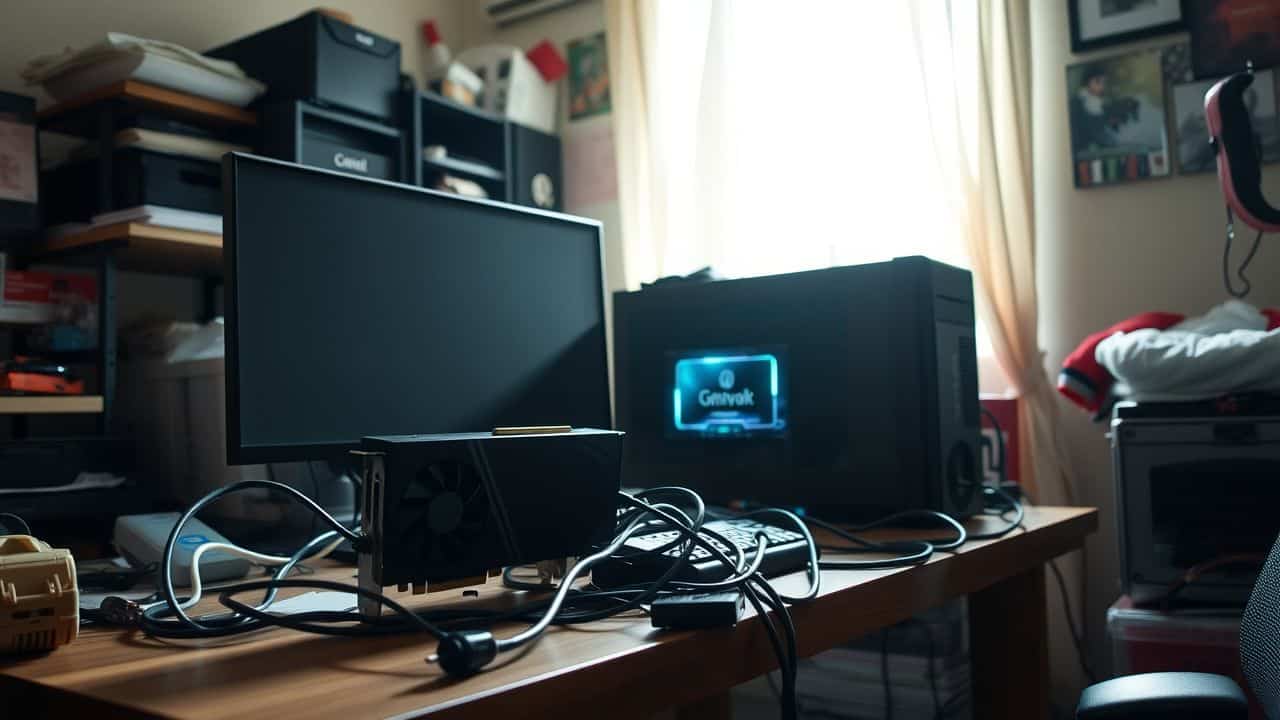
Your gaming rig can affect your FPS performance. Old hardware might limit you, regardless of your skill level. Let’s check out BoBoEclipse’s setup: a GTX 1060 6GB, i5 7600K CPU, and 8 GB RAM.
This combo can handle most games, but it’s not top-of-the-line. For better gameplay, you might need to upgrade. More RAM, a faster CPU, or a newer GPU could improve your performance.
Don’t overlook your monitor and mouse, either. A high refresh rate screen and a precise mouse can enhance your game. 12
FPS games are demanding on your PC. Lag can mess up your aim and reaction time. That’s one reason Counter-Strike is so popular – it runs well on many systems.
To get more performance, adjust your settings. Turn off V-sync to reduce input lag. Lower graphics settings for higher frame rates. A smooth 60 FPS beats pretty visuals when you’re aiming for headshots.
Even small hardware upgrades can significantly improve your gaming experience. 1
Optimizing Game Settings and Configuration
Game settings can make or break your FPS performance. Let’s dive into some key tweaks that’ll boost your gameplay.
- Disable V-sync: This cuts down on input lag, giving you faster response times.
- Crank up your FPS: Aim for 60+ frames per second. It’s smoother and more responsive.
- Lower graphics settings: Pretty games are nice, but speed trumps looks in FPS. 14
- Adjust mouse sensitivity: Find your sweet spot. Too high or low can mess up your aim.
- Tweak field of view (FOV): Wider FOV lets you see more, but might affect performance.
- Turn off motion blur: It looks cool but can make tracking targets harder.
- Use custom crosshairs: Pick one that stands out and helps your aim.
- Optimize audio settings: Good sound cues are crucial for spotting enemies.
- Set resolution to match your monitor: This ensures the clearest image possible.
- Update your drivers: Keep your graphics card running at its best.
Now that we’ve fine-tuned your settings, let’s look at how to master the game mechanics. 13
Addressing Network Issues
Network issues can mess up your FPS gameplay. Lag spikes, high ping, and packet loss are a real pain for gamers. They can turn a perfect headshot into a miss that makes you want to scream. 15 But don’t worry – there are ways to deal with these annoying problems.
First, check your internet speed. A good connection is essential for smooth gaming. Aim for at least 15-20 Mbps download and 1-2 Mbps upload speeds. If you’re not hitting those numbers, give your ISP a call or think about upgrading.
Next, use a wired connection if you can. Wi-Fi is handy, but Ethernet is more reliable. Lastly, close background apps and limit other devices on your network. This frees up bandwidth for your game.
With an average ping of 40, you’re already doing better than most!16
A good connection is like a good teammate – it’s got your back when you need it most.
Developing Skills for Better FPS Game Performance
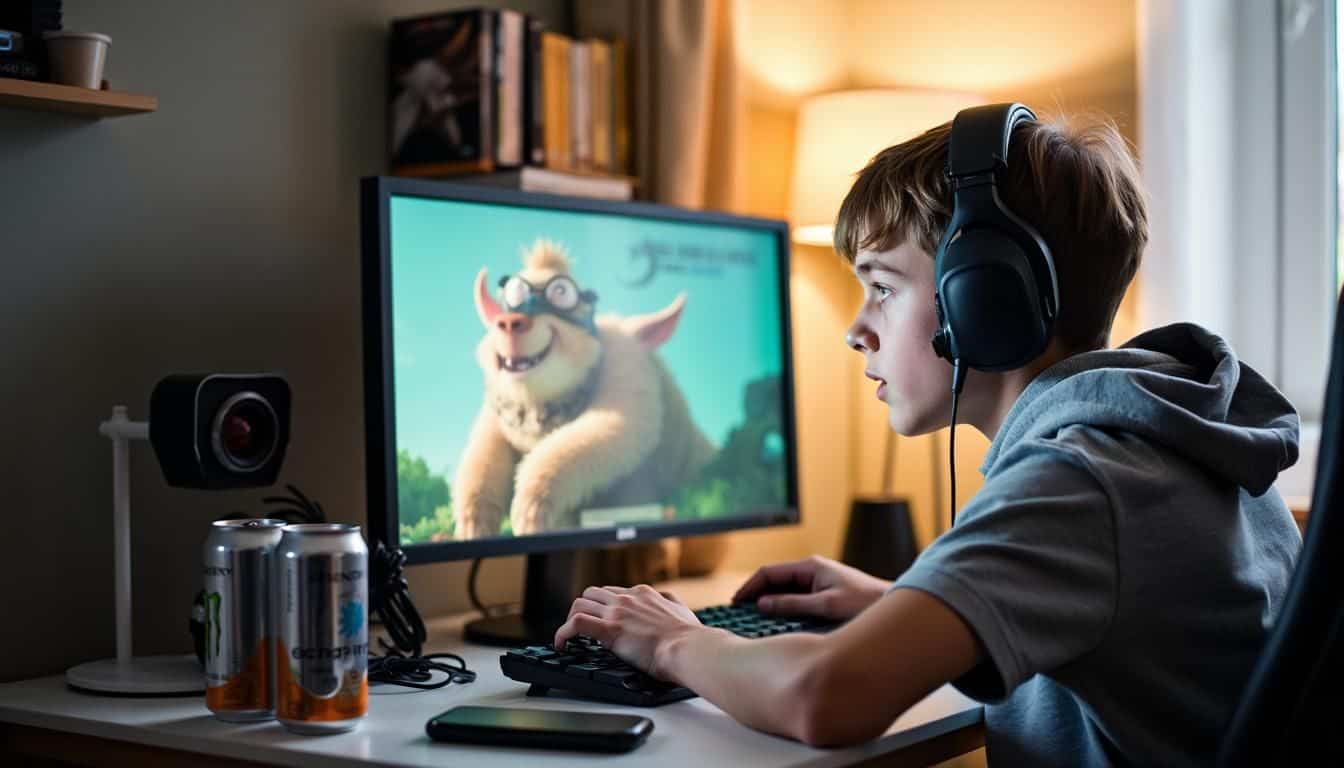
Want to level up your FPS game? It’s all about practice – but not just any practice. Smart training habits and pro tips can turn you from a noob to a headshot machine… if you’re willing to put in the work.
Establishing Practice Routines
Practice makes perfect, even in FPS games. Let’s dive into some killer routines to level up your skills:
- Daily warm-ups: Kick off with 15 minutes of aim training. Shoot bots or use aim trainers to get your reflexes firing.
- Map exploration: Spend 20 minutes each day learning a new map. Find sneaky spots and common choke points.
- Recoil control drills: Practice controlling weapon recoil for 10 minutes. Start with easy guns and work your way up.
- Reaction time boosters: Play quick-draw games or use online tools to sharpen your reflexes for 5-10 minutes daily.
- Pro demo analysis: Watch one pro match or stream per day. Note their movements, decisions, and strategies. 13
- Teamwork exercises: Join a regular squad and practice communication and coordination for an hour.
- Situational training: Set up custom games to practice specific scenarios like 1v1 duels or bomb defusals.
- Hardware tweaks: Spend time optimizing your setup. Adjust mouse sensitivity, keybinds, and graphics settings. 17
- Mental prep: Do 5-10 minutes of focus exercises or meditation before gaming sessions.
- Post-game review: After each session, watch your gameplay. Spot mistakes and plan improvements for next time.
Learning Strategies from Pros
Pro gamers have mastered the art of FPS gaming. Let’s dive into their strategies to level up your skills:
- Study pro gameplay videos: Watch top players’ streams and tournament matches. Pay attention to their movement, aim, and decision-making.
- Copy pro settings: Try out sensitivity and keybinds used by pros. Tweak them to fit your style, but they’re a great starting point. 18
- Join online communities: Engage in forums and Discord servers where pros share tips. Ask questions and learn from their experiences.
- Practice aim drills: Use aim trainers like Kovaak’s or Aim Lab. Focus on tracking, flicking, and target switching exercises. 13
- Learn map callouts: Memorize common spots and their names. Clear communication is key in team play.
- Develop game sense: Predict enemy movements and positions. Think about why pros make certain decisions in different situations.
- Master movement techniques: Learn advanced moves like strafing, bunny hopping, and crouch-jumping. Smooth movement makes you harder to hit.
- Analyze your gameplay: Record and review your matches. Spot mistakes and areas for improvement.
- Play with better players: Queue with skilled friends or join PUGs. Challenging yourself against tough opponents speeds up learning.
- Stay updated on meta: Keep track of weapon balance changes and popular strategies. Adapt your playstyle to stay competitive.
Now that we’ve covered pro strategies, let’s look at mastering game mechanics for FPS games.
Training with Aim Trainers
Aim trainers are game-changers for FPS newbies and pros alike. These nifty tools help sharpen your reflexes and boost accuracy – key skills for dominating the digital battlefield. Studies show that action games can slash reaction times big time. 1 So, by using aim trainers regularly, you’re not just playing… you’re leveling up your brain!
But here’s the kicker – not all aim trainers are created equal. Some focus on flick shots, others on tracking moving targets. The trick is to mix it up and challenge yourself. Start with basic drills, then crank up the difficulty as you improve.
It’s like hitting the gym for your gaming muscles. Stick with it, and you’ll see your in-game performance soar faster than a rocket jump. 19
Mastering Game Mechanics for FPS Games
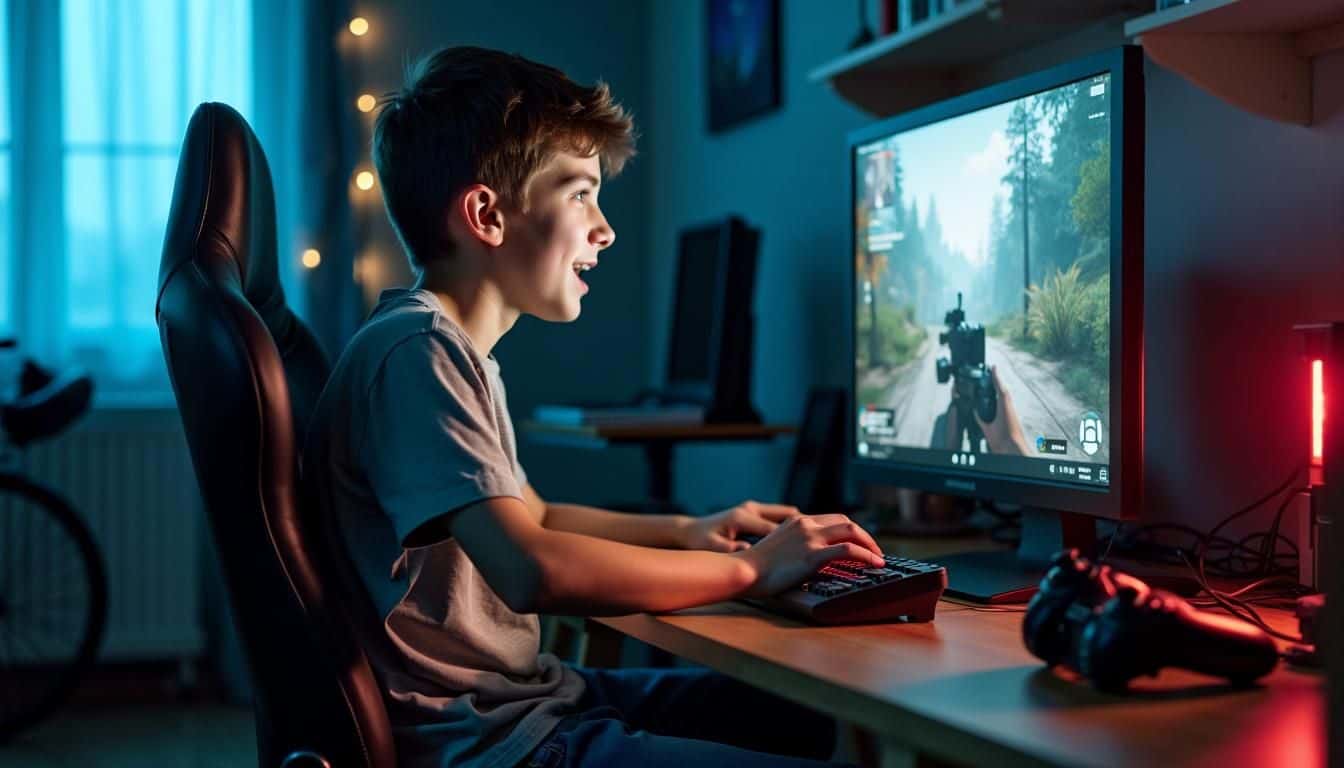
Game mechanics are the heart of FPS games. Mastering them can turn you from a noob to a pro – fast.
Understanding Hitboxes and Bullet Spread
Hitboxes are invisible shapes around game characters that decide if shots hit or miss. They’re like secret targets you can’t see. Good hitboxes make games feel fair and fun. Bad ones? They’ll drive you nuts! 20 Some games have head hitboxes smaller than the visible head model.
This means you might see your crosshair on the enemy’s noggin, but still miss. Tricky, right?
Bullet spread adds another layer to the mix. It’s why your shots don’t always go straight. Think of it as your gun having a mind of its own. The first shot might be dead-on, but the next few? They could go anywhere within a cone.
This spread usually gets worse if you’re moving or shooting fast. 21 Pro tip: short bursts often work better than going full auto. It’s all about finding that sweet spot between speed and accuracy.
Learning Movement and Positioning Tactics
Movement and positioning can make or break your FPS game. Let’s dive into some tactics that’ll up your game and keep you alive longer.
- Master the art of peeking. Quickly pop out from cover, take your shot, and duck back. This minimizes your exposure and keeps enemies guessing. 13
- Strafe like a pro. Move side-to-side while shooting to make yourself a harder target. It’s like dancing, but with bullets flying at you.
- Use high ground. Being above your enemies gives you a better view and makes you harder to hit. Think Obi-Wan Kenobi, but with guns.
- Learn to bunny hop. Jumping while moving makes you faster and harder to hit. It’s not just for rabbits anymore!
- Master crouch-peeking. Quickly crouch and stand while peeking to throw off enemy aim. It’s like playing whack-a-mole, but you’re the mole.
- Use sound to your advantage. Listen for footsteps and reload sounds to pinpoint enemy locations. Your ears are your secret weapon.
- Practice pre-aiming. Keep your crosshair at head level, where enemies are likely to appear. It’s like always being ready for a surprise party.
- Learn to flank. Move around the sides to catch enemies off guard. It’s sneaky, but effective. 22
- Use cover smartly. Don’t just hide behind it, use it to peek and shoot. Think of cover as your dance partner in a deadly tango.
- Master movement-shooting balance. Know when to stop to shoot accurately and when to keep moving. It’s a delicate dance of death.
Exploring Game-Specific Features and Abilities
Each FPS game has its own special moves and tricks. Take Urban Terror, for example. It’s got cool stuff like wall jumping and power sliding. These moves can give you an edge over other players.
But here’s the thing – you gotta practice them a lot. It’s like learning to ride a bike. At first, you’ll fall off. But keep at it, and soon you’ll be zipping around like a pro. 23
Now, let’s talk about guns and gadgets. Every game has its own set. Some might have a grappling hook, others a jetpack. Learn how each tool works. Find out which ones fit your style best.
And don’t forget about the maps! Each one has its own hiding spots and sniper perches. Knowing these can make or break your game. So explore every nook and cranny. It’ll pay off big time when you’re in the heat of battle. 24
People Also Ask
Is using an aimbot the only way to get better at FPS games?
No way, José! Aimbots are cheating tools that’ll get you banned faster than you can say “headshot.” Instead, focus on improving your aim the old-fashioned way: practice, practice, practice. Try aim training games or spend time in the shooting range. It’s like learning to ride a bike – you’ll fall a few times, but soon you’ll be zooming around like a pro.
How can I improve my reaction time in FPS games?
Slow reflexes got you down? Don’t sweat it! Try these tricks: lower your mouse sensitivity, play more often, and get enough sleep. It’s like tuning up a car – small tweaks can make a big difference. Also, lay off the caffeine before gaming. Jittery hands are no bueno for precise aiming.
Why do I always lose in one-on-one gunfights?
Losing duels can be frustrating as heck. But here’s the scoop: it might be your positioning. Are you out in the open like a sitting duck? Try using cover smartly. Think of it like a game of hide-and-seek – the better hidden you are, the harder you are to hit. Also, work on your strafing. Move unpredictably to throw off your opponent’s aim.
How important is having good gaming gear for FPS games?
While fancy gear won’t turn you into a pro overnight, it can give you an edge. A responsive mouse, a smooth mousepad, and a high refresh rate monitor can help. But don’t break the bank! It’s like cooking – good ingredients help, but they can’t replace skill. Focus on improving your gameplay first, then upgrade your gear as you get better.
References
^ https://www.ncbi.nlm.nih.gov/pmc/articles/PMC10368276/
^ https://www.ncbi.nlm.nih.gov/pmc/articles/PMC6829166/
^ https://www.ncbi.nlm.nih.gov/pmc/articles/PMC10306168/
^ https://steamcommunity.com/discussions/forum/1/1621724915813542142/?l=ukrainian
^ https://www.ncbi.nlm.nih.gov/pmc/articles/PMC2871325/
^ https://www.ncbi.nlm.nih.gov/pmc/articles/PMC9042951/
^ https://www.ncbi.nlm.nih.gov/pmc/articles/PMC8765604/
^ https://www.ncbi.nlm.nih.gov/pmc/articles/PMC8277305/
^ https://www.ncbi.nlm.nih.gov/pmc/articles/PMC6676913/
^ https://midnightsps.medium.com/ranked-anxiety-fear-in-competitive-games-9ccc1bf6b0a6
^ https://eludamos.org/index.php/eludamos/article/view/vol5no1-3/html3
^ https://www.researchgate.net/publication/228368634_The_Effects_of_Frame_Rate_and_Resolution_on_Users_Playing_First_Person_Shooter_Games
^ https://www.ncbi.nlm.nih.gov/pmc/articles/PMC8224404/
^ https://www.intel.com/content/www/us/en/gaming/resources/how-to-fix-your-low-frame-rate.html
^ https://www.researchgate.net/publication/221391379_Analysis_of_factors_affecting_players%27_performance_and_perception_in_multiplayer_games (2014-10-16)
^ https://steamcommunity.com/discussions/forum/11/2865910035029099387/ (2019-12-15)
^ https://performancepsu.com/how-to-get-better-at-fps-games/
^ https://www.wikihow.com/Become-Better-at-First-Person-Shooter-Video-Games
^ https://1-hp.org/blog/hpforgamers/aim-training-for-gamers-does-it-really-work-an-evidence-based-discussion-part-1/
^ https://www.youtube.com/watch?v=Nv5KrS3cN9c
^ https://www.gamedev.net/forums/topic/658928-fps-games-recoil-and-spread/ (2014-07-19)
^ https://forum.unity.com/threads/freedom-of-movement-in-competitive-fps.288019/ (2014-12-29)
^ https://www.ncbi.nlm.nih.gov/pmc/articles/PMC10411933/
^ https://davidmullich.com/2018/08/06/game-mechanics-vs-game-features/



